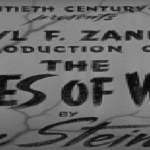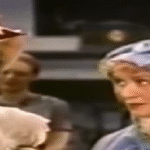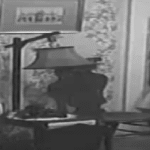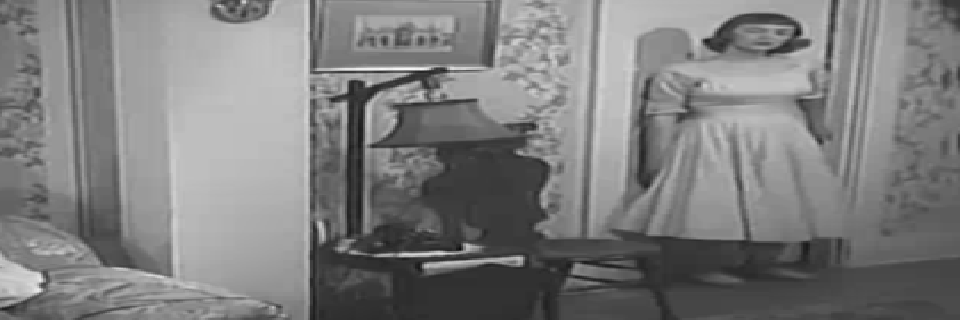Teenagers from Outer Space is a 1959 American science fiction film that falls squarely within the realm of low-budget B-movie cinema. Written, directed and produced by Tom Graeff, the film has developed something of a cult following over the decades, celebrated for its earnest ambition, unintentional humour and quirky charm. Despite its clear limitations in budget and resources, the film attempts to tell a story with genuine stakes, and even a touch of moral weight, wrapped in a tale of alien invasion, youthful rebellion and intergalactic cruelty.
The story begins with the sudden arrival of a spacecraft on Earth, landing just outside a quiet California town. The ship is manned by a group of young humanoid aliens, all dressed in identical jumpsuits, who have come to evaluate the planet for its suitability as a breeding ground for their livestock. These creatures, called Gargons, are essentially massive, lobstery monsters that grow to enormous size and are destined to be a primary food source for the alien civilisation. The alien crew is composed of stern, authoritarian youths, each one seemingly devoid of emotion and operating under the rigid control of their society’s military-like structure.
Among them is Derek, who quickly emerges as different from the others. He has a questioning mind and a conscience, qualities that are not only frowned upon by his people but considered a threat to their survival. When Derek discovers a human skeleton near the landing site, evidence of what he believes is intelligent life on Earth, he argues that the planet should be spared. His objections are dismissed, and the crew, led by the coldly brutal Thor, proceeds with the mission. Thor is the very image of a ruthless enforcer, following orders without question and eager to eradicate any obstacles — including Earthlings.
Derek refuses to be part of the plan and escapes the landing site. What follows is part science fiction, part teen drama, as Derek integrates himself into human society, beginning with a chance encounter with Betty Morgan, a kind young woman who offers him shelter at the home she shares with her grandfather. Betty becomes Derek’s link to the human world, and their friendship soon blossoms into a gentle romance. Through her, Derek comes to understand more about Earth’s people, their capacity for compassion, and their fundamental decency, which strengthens his resolve to protect the planet from his own kind.
Meanwhile, Thor is sent in pursuit of Derek, and his methods are violent and destructive. Armed with a disintegration ray, which leaves behind only piles of neatly cleaned bones, Thor blazes a deadly trail across the town, eliminating anyone who stands in his way. His presence raises the stakes considerably, turning what might have been a straightforward sci-fi tale into something more urgent and thrilling, albeit with the exaggerated drama typical of the era.
Derek, growing increasingly human in his sympathies, tries to warn the authorities, but as with many films of this genre and period, the adults are sceptical or too slow to act. It is the youth — Derek, Betty and her friend Joe — who must take on the responsibility of saving the planet. This dynamic is central to the film’s appeal, tapping into 1950s teenage culture and its growing sense of autonomy, rebellion and moral clarity, in contrast to the distant or clueless adult world.
As the Gargon — initially seen only in a small, manageable form — begins to grow, the threat becomes more real. Though budgetary limitations meant that the creature itself is represented through stock footage of a lobster superimposed over scenes of urban chaos, the film plays this straight, investing the moment with genuine tension. The threat of a full-scale invasion looms, as Derek’s former crew prepares to send more ships to Earth.
Derek’s internal conflict reaches a climax as he confronts Thor in a final showdown. Their battle is not just physical but symbolic — Derek represents the possibility of change, empathy and individual choice, while Thor is the embodiment of blind obedience and destructive loyalty. In the end, Derek manages to defeat Thor, but he knows that more must be done to protect Earth. With a heavy heart, he sacrifices himself by luring the alien fleet into a trap, destroying them along with himself to ensure the safety of his adopted planet.
The film closes with a bittersweet tone. Betty and her grandfather mourn Derek’s loss, and there is a sense that, despite the often outlandish events, the story has touched something sincere. Derek’s sacrifice is not forgotten, and his brief time on Earth has left an impression. The film hints at a quiet message — that compassion and individuality can triumph over rigid control, and that even in the most unlikely circumstances, there is hope for understanding between worlds.
From a technical standpoint, Teenagers from Outer Space is undeniably a product of its time and constraints. The sets are minimal, the props are often laughably simple, and the special effects are primitive by any standard. Yet there is an undeniable sincerity in the execution. Tom Graeff, who wore multiple hats on the production, clearly believed in the story he was telling, and this earnestness shines through even the most awkward moments. The performances, particularly from David Love as Derek, are often stiff, yet oddly endearing. Love brings a wide-eyed innocence to his role, while Bryan Grant as Thor injects menace into his performance with melodramatic flair.
The film is rich in themes that echo the concerns of the Cold War era — fear of invasion, mistrust of authority, and the threat of mass destruction. But it also taps into more universal ideas, such as the power of love, the courage to think for oneself, and the alienation of youth. These broader themes give the film a kind of staying power that transcends its low-budget origins.
In the end, Teenagers from Outer Space may not be a polished cinematic gem, but it stands as a unique and fascinating piece of mid-century science fiction. It is earnest, ambitious, and strangely moving in its own way. What it lacks in sophistication, it makes up for in heart, offering a glimpse into a time when filmmakers, no matter how limited in means, still dared to dream big and tell stories that mattered to them.







